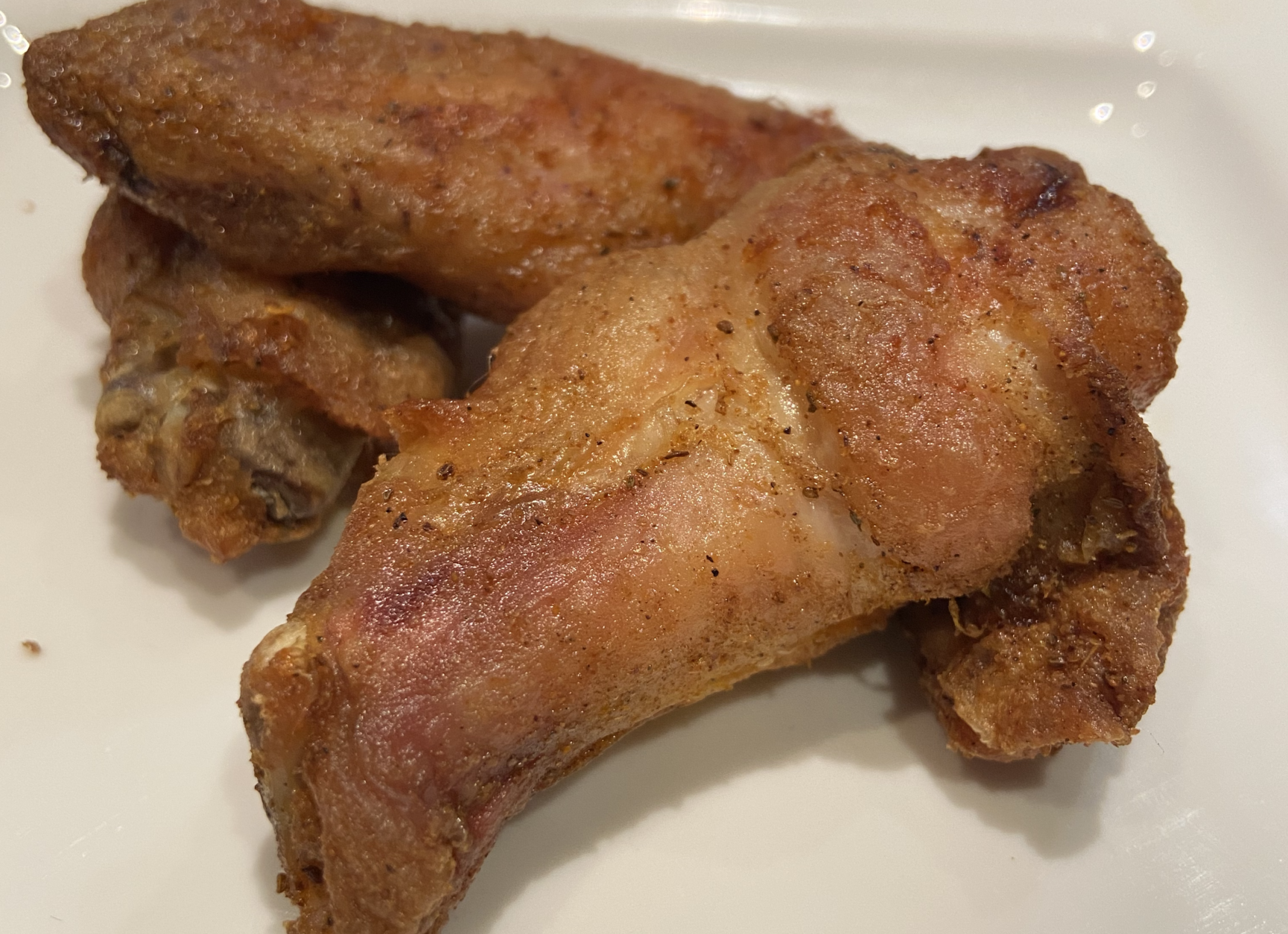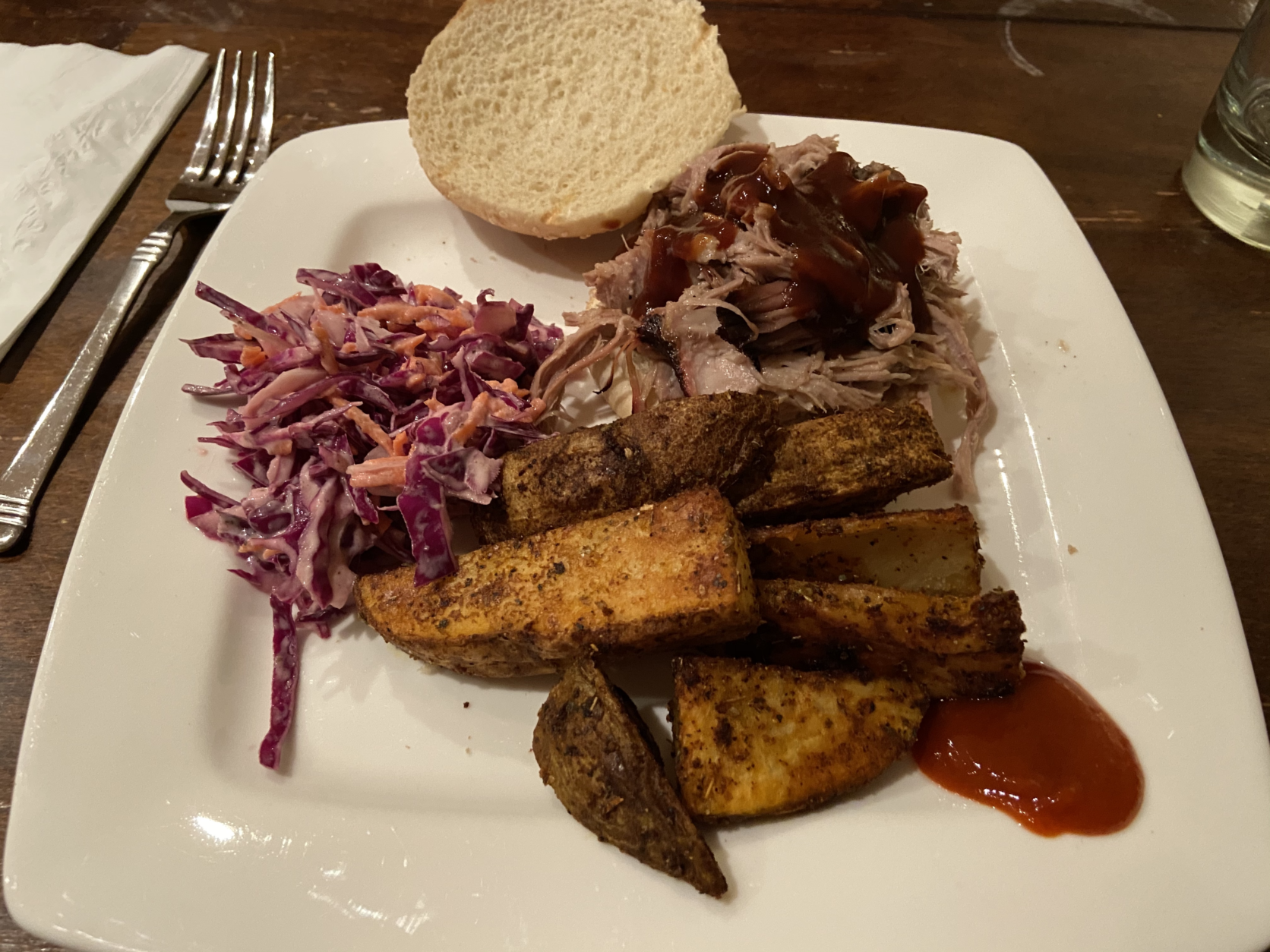Here are two recipes picked by WTOP’s and Federal News Network’s digital strategy manager John Simpson that are sure to be a big hit for the big game between the Kansas City Chiefs and the Tampa Bay Buccaneers this Sunday. Get your ingredients ready and start prepping sooner rather than later for the juiciest and tastiest game food.
Savory recipes for 2021 Super Bowl
 1/2
1/2
Oven-fried Old Bay wings
Great wings don’t have to come with boiling oil or need an air fryer. A small amount of baking powder and salt can give you that same effect at home.
Adding Old Bay to the mix can give you a dry rub better than what you can find in most restaurants. It’s also best if you complete your prep the night before you plan on eating them, so they’re ready to go in the oven whenever you need them to cook.
If you prefer your wings with sauce, this recipe includes an optional step.
Ingredients
- 24 chicken wings, separated
- 1 tablespoon Old Bay seasoning
- 1 teaspoon baking powder
- ¼ teaspoon ground pepper
- ¼ teaspoon kosher salt
- 3 tablespoon hot sauce
- 3 tablespoon butter, melted
- 2 tablespoon Worcestershire sauce
Steps
- Separate chicken wings if they aren’t already. Pat dry.
- Combine Old Bay, baking powder, pepper and salt in a bowl.
- Toss wings in the mixed seasoning. Place wings on a greased rack in a sheet pan lined with aluminum foil.
- Place the pan with wings in the refrigerator uncovered for 8-24 hours.
- Preheat the oven to 425 degrees.
- Bake wings for 30-40 minutes, rotating halfway through. Remove from the oven and dust lightly with Old Bay.
OPTIONAL: Whisk hot sauce, butter, and Worcestershire sauce in a large bowl. Toss wings in sauce after removing from the oven.
 2/2
2/2
Pulled pork (smoked pork shoulder)
All you need is smoke, salt and time before creating the best pulled pork you’ve ever had. If you’ve never smoked anything before but have always wanted to, this is the recipe to start with.
Pork shoulder, or Boston butt, is the most forgiving cut of meat to smoke and very versatile to the seasonings or sauces you may prefer.
If you don’t have a smoker, you can modify a charcoal kettle grill into a smoker, using disposable aluminum pans and some ingenuity with a technique called two-zone cooking.
In short, keep your charcoal to one side of the bottom grate and cook your pork over indirect heat on the opposite side of the top grate.
Placing aluminum pans filled with water beside both your pork and charcoal helps regulate the temperature for that low-and-slow cooking you need for pulled pork.
Time is one of the most important ingredients in any recipe. This pork shoulder will be smoking for 8-10 hours under the best circumstances. A drop in heat can add hours to your cook time, so keep an eye on fluctuations in the cook temperature. Consider smoking your pork shoulder the day before you want to enjoy it and reheating slowly in the oven before kickoff.
Ingredients
- Pork shoulder (5-10 pounds)
- Salt ( ½ teaspoon of kosher salt per pound of meat, or ¼ teaspoon of table salt per pound)
- ⅓ cup of rub
- Barbecue sauce of choice
Steps
- Trim any skin and fat cap off the top of the pork shoulder. A little bit of fat is fine, but you want to expose as much meat as possible. A sharp boning knife can ease this process.
- OPTIONAL: Season the pork shoulder with salt and place in the fridge for 12-24 hours. If you have the time, this dry-brine method will help keep juices in the pork while it’s smoking. You need ½ teaspoon of kosher salt per pound of meat or ¼ teaspoon of table salt per pound. The salt will be absorbed by the meat, so no need to rinse the meat afterward. NOTE: If you decide to brine your pork shoulder, avoid using a rub with salt when you season it later. The combination of salt from the brine and rub will produce overly salty pulled pork. The double-salt jeopardy is real and terrifying.
- Mist your pork shoulder with water and season with a rub of your choice. The flavor of the rub should be to your taste, but avoid extra salt if you brine your pork. Generously season your rub from a shaker to give it an even coat. NOTE: If you need a rub to get you started, mix together brown sugar (¾ cup), granulated sugar (¾ cup), paprika (½ cup), garlic powder (¼ cup), ground pepper (2 tablespoons), and ground rosemary (2 teaspoons). Add any additional seasoning you want (e.g. ancho chile powder, onion powder, ginger powder, etc.) as you want. You will likely have some left over after this cook.
- Preheat your smoker or grill to 225-250 degrees for 30 minutes. Keep your top vent open and adjust the bottom vents to adjust the cook temperature. After preheating, add about 4 ounces of wood chunks or pellets. The wood used for smoking is also a personal preference, but a fruit wood (cherry or apple) usually pairs best with pork. NOTE: For charcoal smokers, the wood chunks (not chips) can go on top of the charcoal or have already been placed in the charcoal before being lit.
- Insert a temperature probe into the thickest part of the pork shoulder without touching the bone. Place the pork on the grill, so it is being cooked by indirect heat and close the top.
- Allow for the pork to smoke uninterrupted as long as smoke is still flowing out of the top vent. More wood may need to be added every few hours. A steady heat temperature of 225-250 degrees is the goal, but this pork is forgiving of any spikes in temp. However, avoid going below 215 degrees, since lost heat means lost time. Whenever you check the pork, lightly misting the pork with water or apple juice can encourage a better crust.
- Once the pork’s temp rises to around 160-170 degrees, it hits what’s called “the stall.” The meat’s temperature may not rise for hours, as the evaporating moisture on the pork is cooling it as fast as the smoke is heating it. There are a few methods for addressing the stall. One option is increasing the grill’s heat up to 300 degrees and try to power through the stall. Another option is to tightly wrap the pork with a double lining of aluminum foil. The method is called the Texas Crutch and can eliminate hours of additional cooking, but result in not-as-crisp of a crust. Adding a little bit of liquid to the wrapped pork, such as apple juice or light beer, can help keep it moist. NOTE: If you are running out of charcoal, wood or time, placing your pork in the oven at 250-300 degrees can help get you over the finish line.
- Once your meat probe hits 203 degrees, it’s time to check the pork. Grab the edge of the shoulder blade bone and begin to rotate it. If it moves easily or wiggles always from the meat, you’re done. If you don’t have a bone, stick a fork in it and turn gently to see if the meat easily pulls apart. If neither of these work, the pork needs about an hour more of cooking time.
- After it’s off heat, tent the pork in foil and rest for 15 minutes. You may want to sneak a small piece. A flavorful crust should be right about a thin, pink smoke ring caused by the smoking process. About 30 minutes from eating, shred your pork with a fork or plastic claws. Use a pan to collect any juices. If the shoulder bone pulls away without any meat attached, you have successfully cooked your pork shoulder. NOTE: If you’re hours away from eating, you can hold the pork in a cooler after wrapping it in aluminum foil and towels.
- Serve the pulled pork on buns with any preferred barbecue sauce and coleslaw. However, this pork is extremely versatile and can be used for nachos, enchiladas or whatever you have on the menu.







